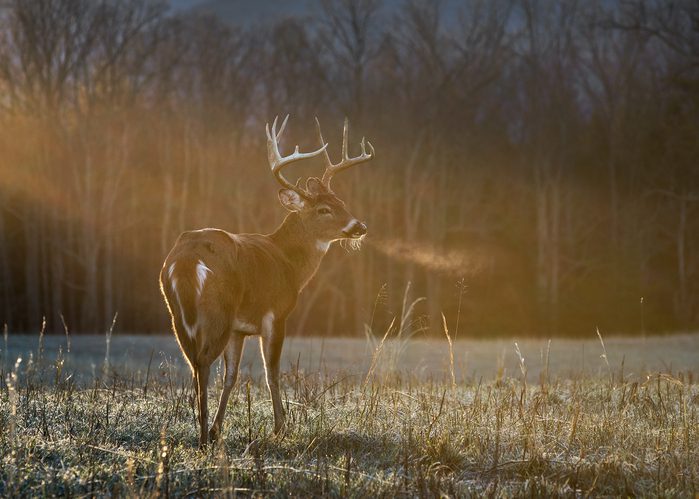Biologists with the Texas Department of Parks and Wildlife (TPWD) are warning hunters and landowners to be on the lookout for deer infected with Chronic Wasting Disease (CWD) ahead of the opening of deer season.
In March 2021, testing showed that some deer released onto high-fenced properties from captive-breeding facilities were found to be infected with or possibly exposed to CWD. In total, around 1,700 deer were released this year across 119 private properties in the state. All captive-breeding facilities were required by TPWD to test their deer and receive negative results prior to sale this summer.
Chronic Wasting Disease is a disease that affects various members of the deer family, including mule deer and white-tail deer in Texas. While CWD is not known to be transmissible to humans or livestock, it is a concern for wildlife management officials and environmentalists.
The disease can shrink herds of deer. Some deer can live asymptomatically with CWD, while others are affected dramatically. NBCI states that, “Oral exposure to prion-tainted blood, urine, saliva and feces has been suggested as the mode of transmission for CWD” therefore once a property is infected it is difficult to recover.
TPWD released data maps along with a caution to the public to be aware of the signs of CWD and how to report deer showing symptoms. The data maps show that 290 CWD-exposed deer were released on two properties in Hunt County as the largest single release. Another 99 deer were released in Bexar County. The remaining deer are scattered on various properties across the eastern half of the state. Just because a deer was exposed to CWD does not mean they were infected.
A deer suffering from CWD may exhibit signs that include dramatic weight loss, drooling, disorientation, and a lack of fear of humans. The Texas Wildlife Department says that hunters should not shoot sick-looking deer. Instead, they are asked to report the location of the deer to TPWD officials.
The October 1 press release from TPWD states that infected deer have been found recently in Lubbock County in a free-ranging mule deer herd. Deer in seven captive breeding facilities have also been identified with CWD infections. The facilities are in Hunt, Uvalde, Matagorda, Mason, and Duval counties.
Despite no known risk of transmission to humans, the CDC advises hunters not to eat venison from deer that appear sick. Hunters in the Trans-Pecos, Panhandle, and South-Central regions are required to bring harvested and tagged deer to an inspection station within 48 hours for testing.
“CWD surveillance of hunter-harvested deer, road-kills, and sick deer is critical for early detection and containment of the disease. Landowners and hunters play a critical role in managing CWD and are encouraged to report any tagged deer, or deer that appear to be sick or behaving strangely, to a TPWD biologist,” the statement reads.
“Anyone hunting deer this season is encouraged to voluntarily provide samples for testing by taking deer to the nearest check station or by contacting a biologist in their area.”
There are an estimated 5.6 million deer in Texas, with the white-tail species accounting for 5.4 million. Mule deer populations in Texas number only about 200,000 animals. As recently as 2020, TPWD reports that white-tail hunting in Texas generates $1.2 billion in economic activity. Licenses and permits are a significant source of wildlife management funding. Deer hunting season began in some counties on October 2 this year.

